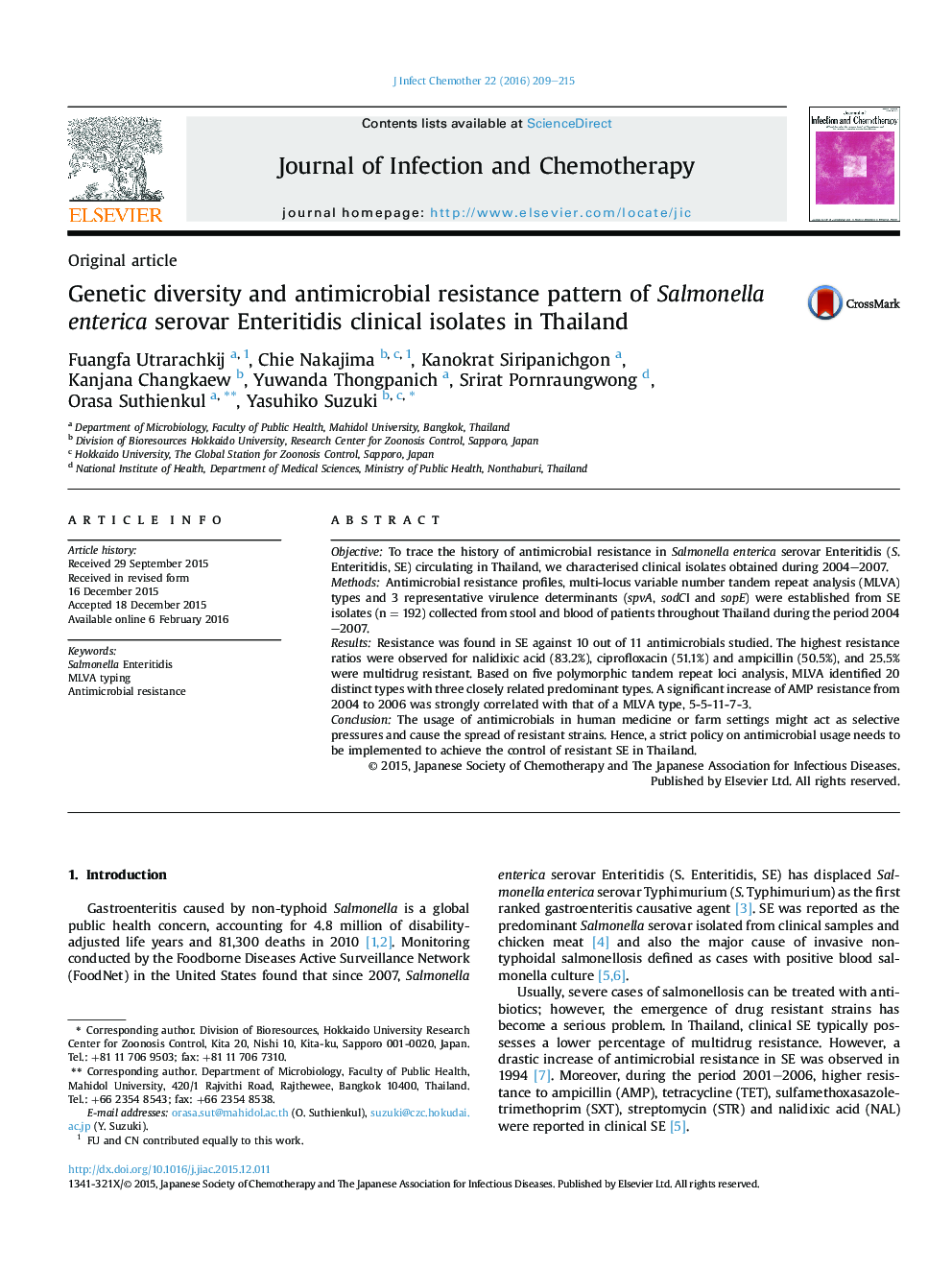| Article ID | Journal | Published Year | Pages | File Type |
|---|---|---|---|---|
| 3376745 | Journal of Infection and Chemotherapy | 2016 | 7 Pages |
ObjectiveTo trace the history of antimicrobial resistance in Salmonella enterica serovar Enteritidis (S. Enteritidis, SE) circulating in Thailand, we characterised clinical isolates obtained during 2004–2007.MethodsAntimicrobial resistance profiles, multi-locus variable number tandem repeat analysis (MLVA) types and 3 representative virulence determinants (spvA, sodCI and sopE) were established from SE isolates (n = 192) collected from stool and blood of patients throughout Thailand during the period 2004–2007.ResultsResistance was found in SE against 10 out of 11 antimicrobials studied. The highest resistance ratios were observed for nalidixic acid (83.2%), ciprofloxacin (51.1%) and ampicillin (50.5%), and 25.5% were multidrug resistant. Based on five polymorphic tandem repeat loci analysis, MLVA identified 20 distinct types with three closely related predominant types. A significant increase of AMP resistance from 2004 to 2006 was strongly correlated with that of a MLVA type, 5-5-11-7-3.ConclusionThe usage of antimicrobials in human medicine or farm settings might act as selective pressures and cause the spread of resistant strains. Hence, a strict policy on antimicrobial usage needs to be implemented to achieve the control of resistant SE in Thailand.
